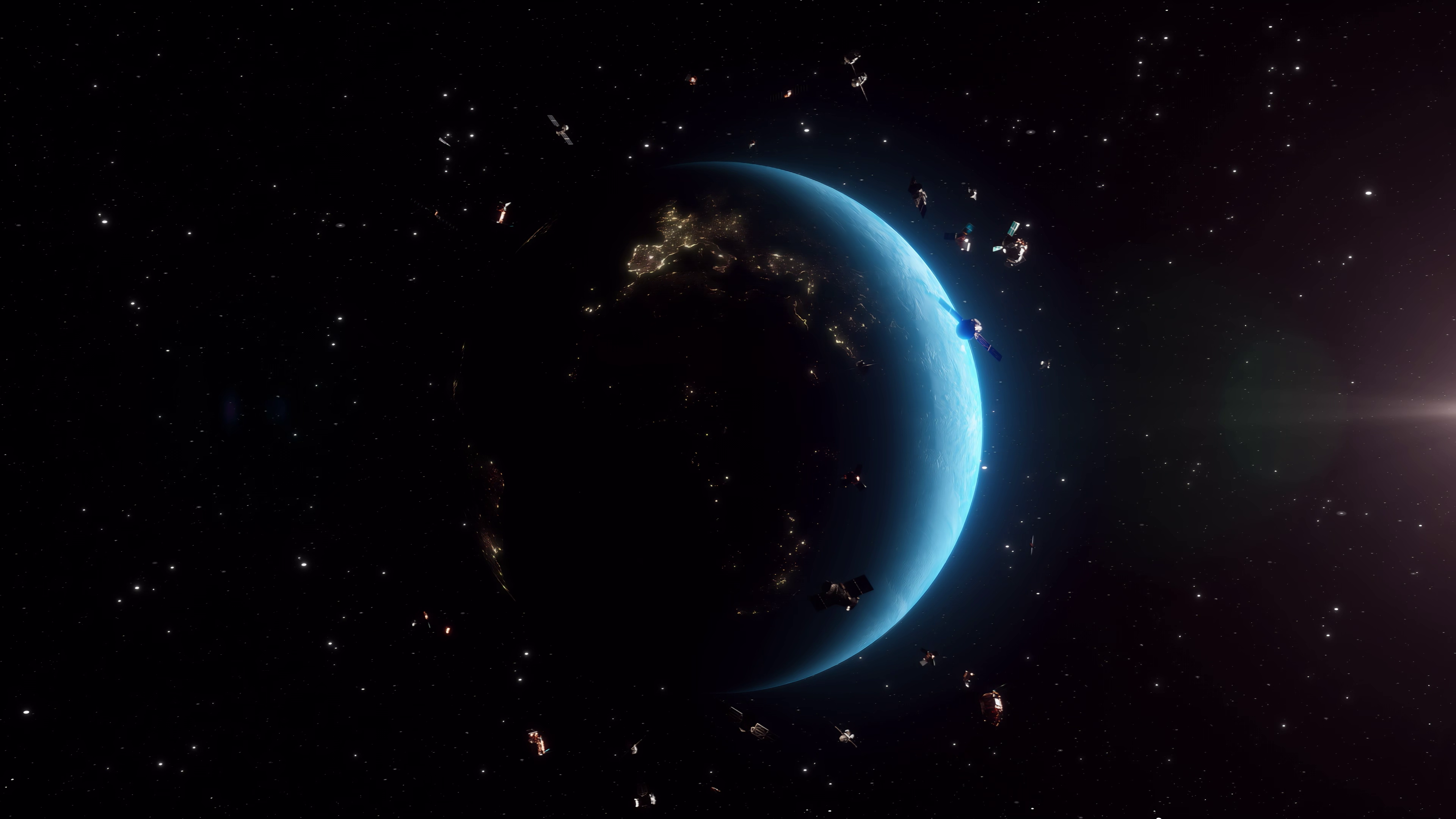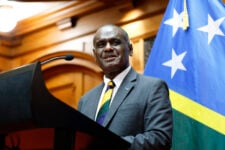
The risks of in-space smash-ups is growing as Earth’s orbit becomes more congested. (European Union Space Surveillance and Tracking Consortium)
AMOS 2023 — An experiment conducted by the Commerce Department and a group of European countries has shown that close international cooperation will be necessary to rectify mismatches in different space tracking systems and avoid on-orbit crashes, but also highlighted the obstacles — due in part to national security concerns — to doing so, according to US participants.
The results of joint study by the Office of Space Commerce (OSC) and the 15-nation European Union Space Surveillance Tracking (EU SST) Consortium will be presented for the first time on Friday here in Hawaii at the annual Advanced Maui Optical and Space Surveillance Technologies (AMOS) Conference.
Matt Hejduk, senior project lead at The Aerospace Corporation which worked with OSC on the study, explained in an interview with Breaking Defense on Monday that the goal of the study was to look for ways to fix the looming problem of different national or regional space situational awareness (SSA) systems for determining where things are, and are going, on orbit resulting in divergent predictions about the likelihood of an in-space smash up.
“[W]e’re moving in a direction of a kind of federated SSA environment, where we’re going to have a capability, the Europeans are going to have a capability, the Japanese are going to have one, the Indians are going to have one, so we’re going to have all of these space catalogs with different data and therefore different predicted positions of satellites, and different answers when we have conjunctions,” he said, echoing comments from OSC officials.
“And sometimes the differences are operationally significant. And then what do you do?” added Hejduk. “A man with two watches never knows what time it is.”
Aerospace is assisting OSC in its effort to develop a civil space traffic management regime, taking over the job of helping commercial, civil and foreign operators avoid on-orbit collisions between their satellites and dangerous space debris from the Defense Department.
Hejduk said the study first identified the technical factors that go into tracking divergences, looked at what types of data exchange would be necessary to fix them, then assessed the results of combining each side’s data and analytical models, versus using each side’s separately.
The US-European team picked 12 satellites in low-, medium- and geosynchronous orbits for the experiment, then collected and shared radar and telescope tracking data over a two-month period in the summer of 2022, according to OSC officials. They wrapped up the analysis this spring, and the final report this summer.
The experiment found that the nascent EU SST system and DoD’s Space Surveillance Network of ground- and space-based telescopes and radar each have gaps in their sensor coverage that the other can fill, Hejduk said. In particular, the Europeans have more telescopes, including in the Southern Hemisphere. The US side, in contrast, has many more radars.
It also found that there was a benefit to tracking accuracy, but more importantly, in aligning the two sides individual predictions of future orbits when data from the two systems was combined. The key to success, Hejduk stressed, was the ability to share raw radar and optical measurements.
At the same time, he said, overcoming barriers to enable sharing that raw data also proved to be the biggest obstacle.
One concern, Hejduk said, was fear of revealing too much information about sensitive satellites.
For example, because OSC currently is, and will be for some time, heavily reliant on space tracking data provided by DoD’s network, OSC had to clear sharing of the raw measurements with both US Space Command and the Space Force’s 18th Space Defense Squadron. That review process was a time consuming even just for the small number of satellites involved in the joint experiment, he said.
This could prove an obstacle for expanding measurement sharing for tracking the many thousands of satellites on orbit in a useful operational timeframe — at least until OSC’s own planned Traffic Coordination System for Space (TraCSS) is running and using largely commercially provided tracking data.
At issue for such data release, one DoD official explained, is not just worry about showing the activities of sensitive military or intelligence satellites, but also that sharing detailed measurements could make it possible for anyone with access to analyze how precisely the US military can keep tabs on adversary spacecraft under what circumstances.
Hejduk said that even after data sharing was approved by DoD, it also took several months to work through the technical specifications of how to calibrate the sensor data being shared and for each side to figure out how to ingest it into their computerized analysis systems. For example, the Europeans use one type of tracking radar not used by the US military network, requiring a software work-around for the US side to incorporate that data.
OSC and the EU SST Consortium now are pondering what next steps might be possible, he said, with the realization that this is likely to be an ongoing process.
Christine Joseph, a special advisor at OSC, told Breaking Defense that the hope is to develop a kind of map or blueprint for figuring out what to do any time the US space traffic system sees a potential space collision and another’s country’s system does not.






















